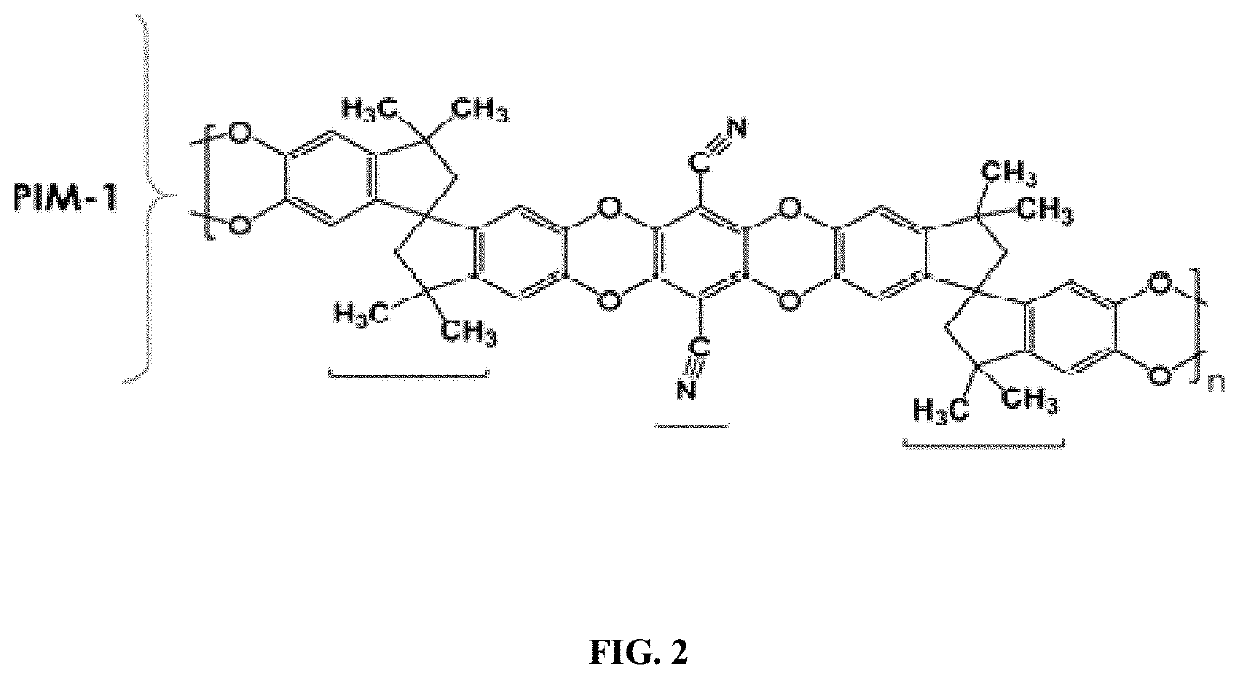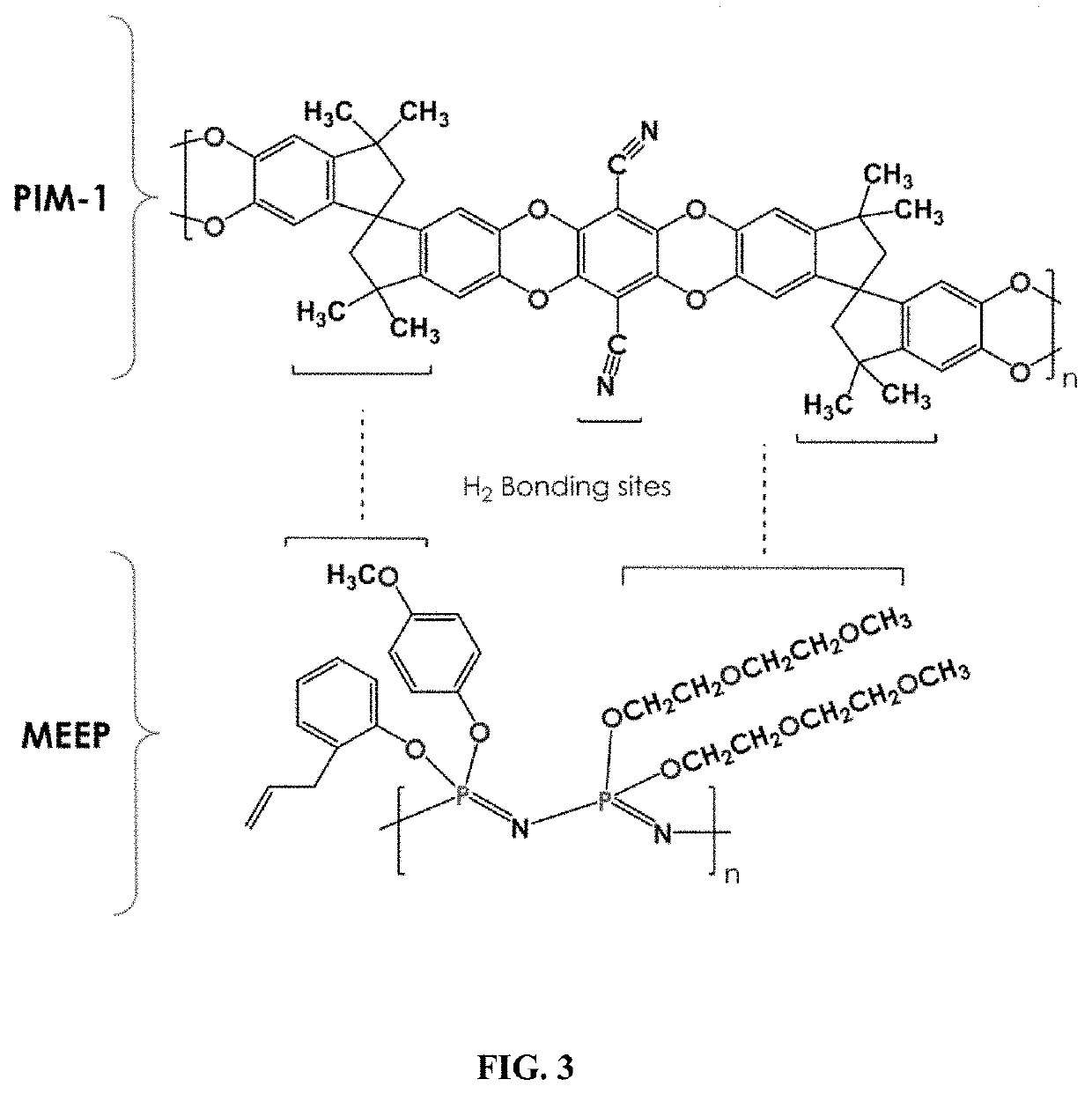Mechanically robust PIM-1 and polyphosphazene blended polymer for gas separation membranes
a gas separation membrane and polyphosphazene technology, applied in the field of blending polymer membranes, can solve the problems of not long-term solution, major cost in the overall process, additional reactions and time, etc., and achieve the effect of simple and cost-effective polymer constituents, improved flexibility/less brittle films, and superior failure strain values of blended materials
- Summary
- Abstract
- Description
- Claims
- Application Information
AI Technical Summary
Benefits of technology
Problems solved by technology
Method used
Image
Examples
Embodiment Construction
[0028]The following description is provided to enable any person skilled in the art to use the invention and sets forth the best mode contemplated by the inventor for carrying out the invention. Various modifications, however, will remain readily apparent to those skilled in the art, since the principles of the present invention are defined herein specifically to provide a blend polymeric membrane composition and method for separating CO2 from a gaseous mixture. The blend polymeric membrane is a blend of polyphosphazene and polymers of intrinsic microporosity (PIM).
Polyphosphazenes
[0029]Polyphosphazenes are advantageous as polymeric membranes for carbon dioxide (CO2) separations due to the synthetic tunability, backbone flexibility, stability, and property optimization. The co-substitution of different side groups can multiply the properties at same time, which is especially important in this application since the membranes not only require a high CO2 affinity, but can advantageousl...
PUM
| Property | Measurement | Unit |
|---|---|---|
| size | aaaaa | aaaaa |
| Young's modulus | aaaaa | aaaaa |
| Young's modulus | aaaaa | aaaaa |
Abstract
Description
Claims
Application Information
 Login to View More
Login to View More - R&D
- Intellectual Property
- Life Sciences
- Materials
- Tech Scout
- Unparalleled Data Quality
- Higher Quality Content
- 60% Fewer Hallucinations
Browse by: Latest US Patents, China's latest patents, Technical Efficacy Thesaurus, Application Domain, Technology Topic, Popular Technical Reports.
© 2025 PatSnap. All rights reserved.Legal|Privacy policy|Modern Slavery Act Transparency Statement|Sitemap|About US| Contact US: help@patsnap.com



